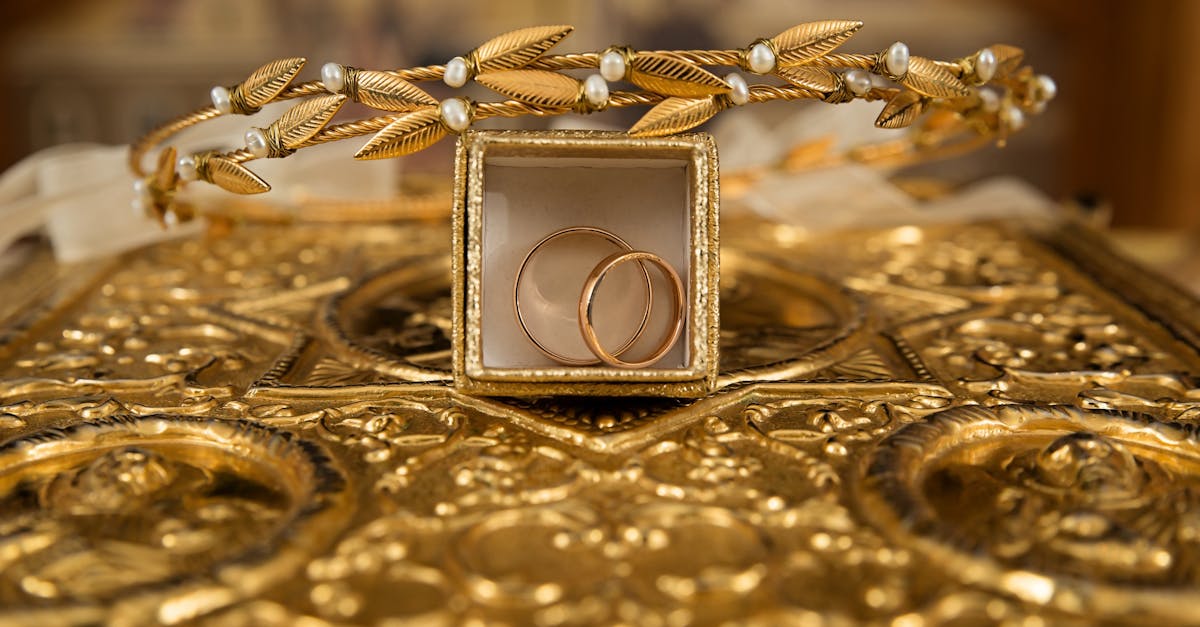Unveiling the Secrets of Gold Purity: A Journey to Informed Decision-Making

For centuries, people have been drawn to the beauty, value, and allure of gold. But understanding the different types of gold and their purity can be a daunting task. In this comprehensive guide, we’ll decode the world of gold, empowering you with the knowledge to make confident decisions about your purchases.
Gold purity is often measured in karats, with 24k representing 100% pure gold. As the karat value decreases, so does the purity of the gold. In this article, we’ll explore the intricacies of 18k and 22k gold, uncovering their unique characteristics and suitability for different applications.
We’ll also dispel the myth of 100% pure gold and delve into the fascinating world of Chinese gold, renowned for its distinctive hue and cultural significance. By the end of this guide, you’ll be equipped to navigate the world of gold with confidence, ensuring that your purchases are both authentic and aligned with your needs.
Key Insights
- Understanding gold purity is crucial for informed decision-making.
- Karat value indicates the purity of gold, with 24k being the purest.
- 18k gold offers a balance between durability and beauty, while 22k gold boasts exceptional purity and richness.
- Distinguishing between gold purities requires attention to hallmarks and testing methods.
- Choosing a reputable jeweler ensures the authenticity and quality of gold purchases.
1. Introduction: Navigating the World of Gold
Welcome to the captivating world of gold, where allure and value intertwine. As you embark on your journey to acquire this precious metal, understanding gold purity is paramount to making informed decisions that align with your needs and preferences.
Gold purity is often measured in karats, with 24k representing 100% pure gold. As the karat value decreases, so does the purity of the gold. Understanding the different karat values will empower you to choose the perfect gold for your jewelry, investments, or other applications.
In this article, we’ll delve into the world of gold purity, exploring the intricacies of different karats and their impact on the properties of gold. We’ll also uncover the fascinating history and cultural significance of gold, providing you with a well-rounded understanding of this timeless metal.
2. Demystifying Gold Carat: 18k vs. 22K

In the realm of gold, karats reign supreme as the measure of purity. When you hear 18k or 22k gold, it refers to the amount of pure gold present in the alloy. Let’s break down the differences between these two popular karat values:
18k gold is a harmonious blend of 75% pure gold and 25% other metals, typically copper or silver. This combination strikes a balance between durability and beauty, making 18k gold a popular choice for everyday jewelry. It’s strong enough to withstand wear and tear, yet retains the rich, warm hue of gold.
22k gold, on the other hand, boasts a higher purity of 91.67% gold, with only 8.33% of other metals. This higher gold content gives 22k gold a deeper, more luxurious color and a softer feel. However, its lower durability makes it better suited for special occasion jewelry or collector’s pieces rather than everyday wear.
18k Gold: A Harmonious Blend of Strength and Beauty
18k gold is a popular choice for jewelry due to its harmonious blend of strength and beauty. Its durability stems from the addition of other metals, typically copper or silver, which account for the remaining 25% of the alloy. This combination makes 18k gold more resistant to scratches and dents compared to higher karat golds, making it suitable for everyday wear.
The aesthetic appeal of 18k gold lies in its rich, warm hue. The higher gold content gives it a luxurious look while the alloyed metals impart a subtle warmth. This makes 18k gold a versatile choice for a wide range of jewelry designs, from classic to contemporary.
Whether you’re looking for an engagement ring, a pendant, or a pair of earrings, 18k gold offers an ideal balance of durability and beauty, ensuring that your cherished pieces will stand the test of time while maintaining their radiant glow.
22K Gold: Exceptional Purity for the Discerning Eye
For those with a discerning eye, 22k gold is a true treasure. Boasting a higher purity of 91.67%, it offers an exceptional richness and luxurious appearance that sets it apart from lower karat golds.
The higher gold content in 22k gold gives it a deep, radiant hue that exudes warmth and opulence. Its softness and pliability make it ideal for intricate jewelry designs, allowing artisans to create delicate and detailed pieces.
While its higher purity makes 22k gold more susceptible to scratches and dents, its beauty and rarity make it a coveted choice for special occasion jewelry, collector’s items, and investments. Each piece of 22k gold jewelry is a testament to the wearer’s discerning taste and appreciation for the finest things in life.
3. 100% Pure Gold: A Myth or Reality?
The notion of 100% pure gold is often encountered, but it’s important to understand that achieving such purity in practice is highly challenging. Pure gold, also known as 24k gold, is extremely soft and malleable, making it impractical for everyday use in jewelry or other applications.
The softness of pure gold makes it prone to bending, scratching, and losing its shape, which is why it’s typically alloyed with other metals to enhance its durability. Even the slightest impurities can significantly affect the properties of gold, influencing its color, hardness, and melting point.
Therefore, while the concept of 100% pure gold exists, it’s more theoretical than practical. For most applications, gold is alloyed with other metals to achieve the desired balance of purity, durability, and aesthetic appeal.
4. Distinguishing 22K from 24K Gold: A Guide to Hallmarks and Testing Methods

Distinguishing between 22k and 24k gold requires a keen eye and an understanding of hallmarks and testing methods. Here’s a practical guide to help you identify the difference:
Hallmarks: Hallmarks are official stamps or symbols that indicate the purity of gold. Look for a hallmark that says
5. Unveiling the Secrets of Chinese Gold: Why it Stands Out
Chinese gold stands out in the world of precious metals, captivating hearts with its distinctive yellow hue and rich cultural significance. Unlike Western gold, which tends to have a more orangey color, Chinese gold is known for its purer, more vibrant yellow tone. This unique color is attributed to a higher percentage of pure gold and a lower percentage of alloying metals.
In Chinese culture, gold holds immense value and symbolism. It represents wealth, prosperity, and good fortune, making it a popular choice for jewelry, ornaments, and investment. The distinctive yellow color of Chinese gold is believed to bring happiness and ward off evil spirits. Traditionally, Chinese gold jewelry is often adorned with intricate designs and auspicious symbols, further enhancing its cultural significance.
The allure of Chinese gold extends beyond its aesthetic and cultural appeal. It is also prized for its high purity and durability. Chinese gold is typically 22k or 24k, indicating a high concentration of pure gold. This makes it a valuable investment and a cherished heirloom that can be passed down through generations.
6. Choosing a Trustworthy Jeweler: A Key to Authenticity
Choosing a trustworthy jeweler is paramount when seeking genuine and high-quality gold. Here are some key factors to consider:
Reputation and Experience: A jeweler’s reputation is a testament to their reliability and expertise. Look for jewelers with a long-standing presence in the community and positive customer reviews. Inquire about their experience in handling gold and their knowledge of different karat values and gold types.
Certifications and Affiliations: Reputable jewelers often hold certifications from recognized organizations such as the Gemological Institute of America (GIA) or the American Gem Society (AGS). These certifications indicate that the jeweler has undergone rigorous training and adheres to ethical standards.
Transparency and Communication: Transparency is crucial. Choose a jeweler who is open and honest about the gold they sell, providing detailed information on its purity, origin, and any treatments or enhancements. Clear communication ensures that you fully understand the product you’re purchasing.
7. Conclusion: Making Informed Decisions with Confidence
Navigating the world of gold can be empowering with the right knowledge. This guide has provided you with a comprehensive understanding of gold purity, its different types, and how to distinguish between them. Armed with this information, you can now make informed decisions about your gold purchases, ensuring that you get the quality and value you deserve.
Remember, understanding gold purity is key to choosing the right pieces for your needs, whether it’s durable jewelry for everyday wear, an opulent collector’s item, or a smart investment. By considering the factors discussed in this article, you can confidently purchase gold that aligns with your preferences and brings you lasting satisfaction.
So, embrace your newfound knowledge and venture into the world of gold with confidence. Let your purchases be a reflection of your discerning taste and a testament to your understanding of this timeless precious metal.
Is it possible to find 100% pure gold?
While the concept of 100% pure gold exists, it’s challenging to achieve in practice. Pure gold, also known as 24k gold, is extremely soft and malleable, making it impractical for everyday use in jewelry or other applications. To enhance durability, gold is typically alloyed with other metals.
How can I determine the purity of gold at home?
There are a few simple tests you can perform at home to get an approximate idea of gold purity. The acid test involves applying a small drop of nitric acid to the gold item. The reaction between the acid and the gold will produce a distinct color change depending on the karat value. You can also use a gold purity tester, which is a handheld device that provides a quick and non-destructive way to estimate gold purity.
What is the difference between white gold and yellow gold?
White gold is an alloy of gold and white metals, such as palladium or nickel. It has a silvery-white appearance and is often used in jewelry to create a more modern and contemporary look. Yellow gold, on the other hand, is a traditional gold alloy that retains the natural warm hue of gold. The difference in color is due to the different metals used in the alloys.
Table of Key Insights
| Key Insight | Description | |—|—| | Understanding Gold Purity | Understanding gold purity is crucial for informed decision-making when purchasing gold jewelry or investments. | | Karat Value | Karat value indicates the purity of gold, with 24k being the purest and most valuable. | | 18k vs. 22k Gold | 18k gold offers a balance between durability and beauty, while 22k gold boasts exceptional purity and richness. | | Distinguishing Gold Purities | Distinguishing between gold purities requires attention to hallmarks and testing methods to ensure authenticity. | | Choosing a Reputable Jeweler | Choosing a reputable jeweler is essential for ensuring the authenticity and quality of gold purchases. |
Leave a Reply